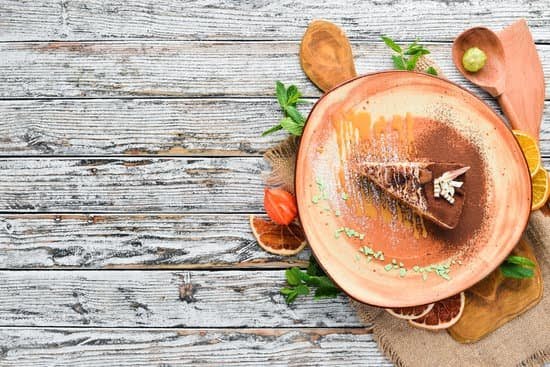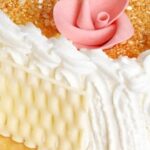Are you ready to add a pop of color and texture to your baked creations? Look no further than the colorful world of cake decorating sprinkles. Whether you’re a seasoned baker or just getting started, sprinkles can elevate your baked goods to the next level. From nonpareils and jimmies to sanding sugar and more, there are endless options to explore when it comes to decorating your cakes, cupcakes, and cookies with these delightful confections.
The history of cake decorating sprinkles is rich and fascinating, spanning from ancient times to present day. Understanding the origins and evolution of sprinkles can provide valuable insight into their cultural significance and enduring appeal. In addition to exploring their history, we’ll also delve into the various types of sprinkles available, including traditional nonpareils, classic jimmies, sparkling sanding sugars, and many others.
In this article, we will take a comprehensive look at the different types of cake decorating sprinkles available on the market today. From classic favorites to trendy new varieties, you’ll discover how each type can be used to enhance your baked creations. Additionally, we’ll explore techniques and tips for effectively using sprinkles to add visual appeal and dimension to your cakes, cookies, and other treats.
And if you’re feeling adventurous, we’ll even show you how to make your own customized sprinkle blends at home. Get ready to embark on a colorful journey through the world of cake decorating sprinkles.
History of Cake Decorating Sprinkles
Cake decorating sprinkles have a long and colorful history that dates back to ancient times. The use of sprinkles for decorating food can be traced back to the 17th century in France, where they were used as a way to add color and flair to desserts. In those days, sprinkles were made from crushed sugar, almonds, and other natural ingredients, creating a crunchy texture and vibrant colors.
As time progressed, the art of cake decorating sprinkles continued to evolve. In the 18th century, nonpareils – tiny round sprinkles – became popular in Europe and were used to decorate not only cakes but also cookies and pastries. Fast forward to present day, and we now have an extensive variety of sprinkle options available, from traditional nonpareils to modern metallic dragees and edible glitter.
The history of cake decorating sprinkles demonstrates how this decorative element has been part of culinary traditions across different cultures for centuries. Today, bakers and decorators continue to explore new ways to incorporate sprinkles into their creations, honoring the rich heritage behind this beloved confectionery adornment. Whether it’s for a birthday celebration or a festive holiday treat, the history of cake decorating sprinkles continues to inspire bakers around the world.
- Ancient use of sprinkles in France
- Evolution of sprinkle varieties over time
- Influence of sprinkle history on modern baking
Types of Cake Decorating Sprinkles
When it comes to cake decorating, sprinkles are a versatile and fun way to add color, texture, and flavor to any baked creation. There are several types of cake decorating sprinkles available in the market, each with its own unique characteristics and uses. From nonpareils to jimmies to sanding sugar, these tiny confections come in various shapes, sizes, and flavors, making them perfect for all kinds of cake decorating projects.
Nonpareils are small spherical sprinkles that come in a wide range of colors. They are perfect for adding a pop of color to cookies, cakes, and cupcakes. Jimmies, on the other hand, are elongated and rod-shaped sprinkles that have a softer texture than nonpareils. They are great for adding a subtle crunch and visual interest to baked goods. Sanding sugar is larger and coarser than traditional granulated sugar and adds sparkle and texture to desserts.
In addition to these classic varieties, there are also specialty cake decorating sprinkles available such as edible glitter, metallic dragees, confetti quins, and more. These unique sprinkle options provide bakers with even more creative possibilities when it comes to decorating their sweet treats.
| Sprinkle Type | Description |
|---|---|
| Nonpareils | Small spherical sprinkles in a variety of colors |
| Jimmies | Elongated rod-shaped sprinkles with a softer texture |
| Sanding Sugar | Larger and coarser than granulated sugar; adds sparkle and texture |
How to Use Cake Decorating Sprinkles
Adding cake decorating sprinkles to your baked creations can take them from ordinary to extraordinary. With a wide variety of colors, shapes, and sizes available, there are endless possibilities for using sprinkles to enhance the visual appeal of your cakes, cupcakes, cookies, and more. Whether you’re a novice or experienced baker, mastering the techniques for applying sprinkles can elevate your baked goods to a professional level.
Here are some techniques and tips for using cake decorating sprinkles to add a pop of color and texture to your baked creations:
1. Sprinkle Over Frosting: After frosting your cake or cupcakes, simply sprinkle the desired type of sprinkles over the top. Use a spoon or small shaker to evenly distribute the sprinkles for a neat and polished finish.
2. Create Patterns or Designs: Get creative with your sprinkle application by arranging them in patterns or designs on your frosted surface. Use stencils, cookie cutters, or piping bags to create precise shapes before adding the sprinkles.
3. Dip Treats in Sprinkles: For an all-over sprinkle effect, consider dipping freshly frosted treats such as marshmallows, cake pops, or chocolate-dipped cookies into a bowl of sprinkles. Gently press the treats into the sprinkles to ensure they adhere properly.
Remember that experimentation is key when it comes to using cake decorating sprinkles. Don’t be afraid to combine different types of sprinkles or mix colors to achieve unique and eye-catching results that will impress your friends and family at any special occasion. Whether you’re decorating for a birthday party or just trying out new techniques at home, let your imagination run wild with these tiny bursts of colorfulness.
DIY Cake Decorating Sprinkles
Are you a baking enthusiast looking to add a personal touch to your cakes and desserts? Making your own customized cake decorating sprinkles at home might be just the creative outlet you’re looking for. Not only can DIY sprinkles add a unique flair to your baked goods, but they also allow you to experiment with different flavors, colors, and textures that may not be readily available in store-bought options.
Ingredients and Tools
To make your own cake decorating sprinkles, you’ll need some basic ingredients and tools that are likely already in your kitchen. Powdered sugar, water, gel food coloring, flavor extracts or essential oils (optional), and a piping bag fitted with a small round tip are all you need to get started. Additionally, parchment paper or silicone mats will come in handy for drying and storing the homemade sprinkles.
DIY Process
The process of making DIY cake decorating sprinkles is relatively simple and involves mixing powdered sugar with a small amount of water to create a thick paste. Once the paste is ready, it can be divided into separate bowls for coloring using gel food coloring. After adding color and flavor as desired, the mixture is piped onto parchment paper or silicone mats in thin lines.
The lines are left to dry for several hours or overnight until they harden. Once hardened, the lines can be broken into smaller pieces to create sprinkle-like shapes.
By creating your own customized cake decorating sprinkles at home, you can elevate your baking game by offering unique flavors and designs that set your creations apart from store-bought alternatives. Whether you choose to experiment with different colors and flavors or simply enjoy the satisfaction of making something from scratch, DIY sprinkles add creativity and individuality to your baking endeavors.
Cake Decorating Sprinkles Trends
Cake decorating sprinkles have come a long way from being just simple colored sugar. As baking and cake decorating continue to evolve, so do the trends in sprinkle design. From metallic finishes to unicorn-themed sprinkles, there are always new and exciting designs emerging in the world of cake decorating.
Metallic Finishes
One of the current trends in sprinkle design is metallic finishes. These edible metallic sprinkles add a touch of elegance and luxury to any baked creation. Whether it’s gold, silver, or rose gold, these shiny sprinkles are perfect for adding a glamorous touch to wedding cakes, anniversary desserts, or any special occasion treats.
Unicorn-Themed Sprinkles
Another popular trend in sprinkle design is unicorn-themed sprinkles. These colorful and whimsical sprinkles typically feature pastel colors, as well as shapes such as stars, hearts, and flowers. Perfect for unicorn-themed parties or simply adding a magical touch to any dessert, these trendy sprinkles are a favorite among bakers and cake decorators alike.
Seasonal and Holiday-Inspired Sprinkles
Seasonal and holiday-inspired sprinkle designs are also gaining popularity among bakers. From pumpkin-shaped sprinkles for Halloween to snowflake-shaped sprinkles for winter holidays, there is a wide array of seasonal designs to choose from. These themed sprinkles are an easy way to add festive flair to your baked goods during different times of the year.
As the demand for unique and eye-catching baked creations continues to grow, so too will the trends in sprinkle design. Whether it’s metallic finishes, unicorn-themed sprinkles, or seasonal designs, the world of cake decorating sprinkles is full of exciting fads that can elevate your baking game. Stay tuned for upcoming fads in sprinkle design as this vibrant industry continues to flourish.
The Science of Sprinkles
Cake decorating sprinkles are not only visually appealing, but they also offer a delightful crunch and burst of flavor to any baked treat. But have you ever wondered about the science behind these tiny confectionery delights? Understanding the chemistry and composition of different sprinkle varieties can help you make more informed choices when selecting the perfect sprinkles for your next baking project.
One of the key components of cake decorating sprinkles is sugar. Nonpareils, jimmies, sanding sugar, and other varieties are primarily made from sugar in different forms. Nonpareils, for example, are tiny balls made from sugar and starch, while jimmies are small rod-shaped confections typically made from a mixture of sugar, corn syrup, and food coloring.
In addition to sugar, cake decorating sprinkles often contain ingredients such as cornstarch, vegetable oil, gum arabic (a natural gum made from the sap of acacia trees), and artificial coloring agents. The specific combination of these ingredients varies depending on the type and brand of sprinkles.
For instance, sanding sugar is coarser than nonpareils and jimmies because it contains larger granules of sugar. By understanding the composition of different sprinkle varieties, you can choose the ideal sprinkle type for achieving your desired aesthetic and textural results in your baking endeavors.
| Types | Composition |
|---|---|
| Nonpareils | Sugar and starch |
| Jimmies | Sugar, corn syrup, food coloring |
Conclusion
In conclusion, cake decorating sprinkles are a versatile and fun way to add a pop of color and texture to your baked creations. From the ancient origins of sprinkles to the current trends in sprinkle design, these tiny confections have truly stood the test of time. Whether you prefer nonpareils, jimmies, sanding sugar, or any other variety, there are endless possibilities for enhancing your desserts with the perfect sprinkle.
Adding cake decorating sprinkles to your baking repertoire not only allows you to elevate your sweet treats but also provides an opportunity for creativity and personalization. Whether you are using them to decorate a birthday cake, cookies, cupcakes, or any other baked goods, sprinkles can truly take your creations to the next level.
Furthermore, with the growing popularity of DIY and customized baking projects, making your own cake decorating sprinkles at home has become a trend in itself. By understanding the chemistry and composition of different sprinkle varieties, enthusiasts are not only able to create unique designs but also cater to specific dietary requirements or flavor preferences.
As we continue to explore the colorful world of cake decorating sprinkles and experiment with new techniques and trends, it’s clear that these tiny delights will remain an essential tool for bakers looking to add that extra touch of whimsy and delight to their confections.
Frequently Asked Questions
What Are the 4 Types of Sprinkles?
The four types of sprinkles commonly used for decorating desserts are nonpareils, jimmies, sanding sugar, and confetti quins. Nonpareils are tiny balls, while jimmies are elongated and tubular.
How Do You Decorate a Cake With Sprinkles?
Decorating a cake with sprinkles can be done by simply sprinkling them over the frosting or icing. Sprinkles can also be used to create patterns, borders, or even elaborate designs on the cake’s surface.
What Sprinkles Won’t Melt in Cake?
Sprinkles that won’t melt in a cake are those made from ingredients that can withstand the heat of baking without losing their shape or color. This includes nonpareils, jimmies, and confetti quins which are often used for this purpose.

Welcome to our cake decorating blog! My name is Destiny Flores, and I am the proud owner of a cake decorating business named Cake Karma. Our mission is to provide delicious, beautiful cakes for all occasions. We specialize in creating custom cakes that are tailored specifically to each customer’s individual needs and tastes.





